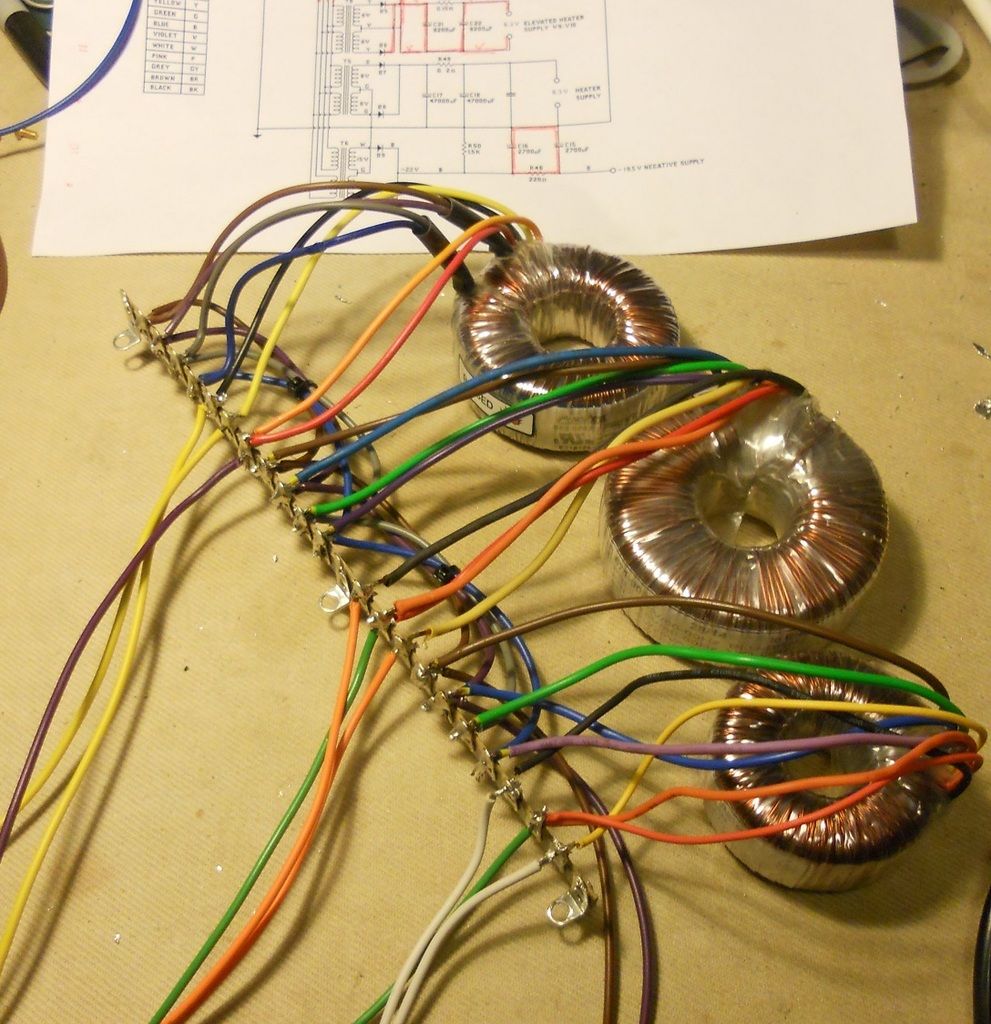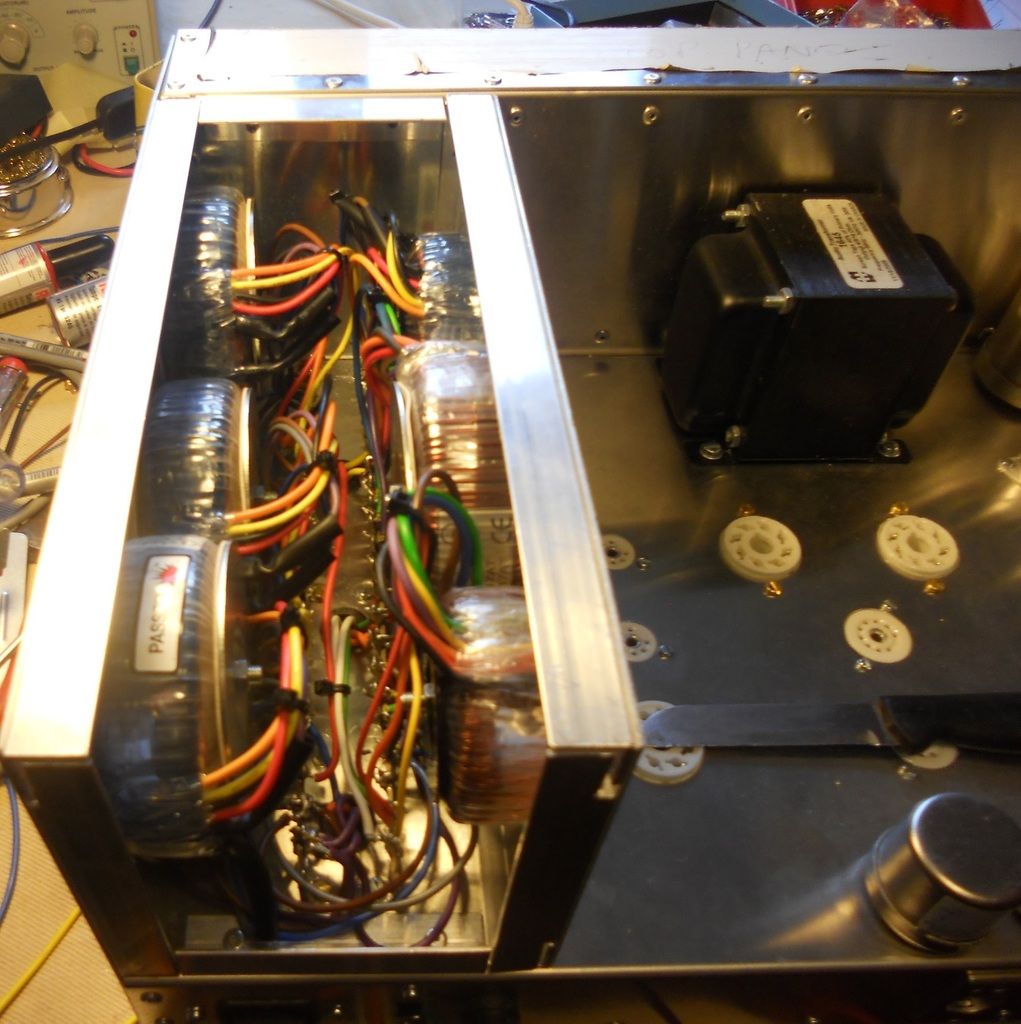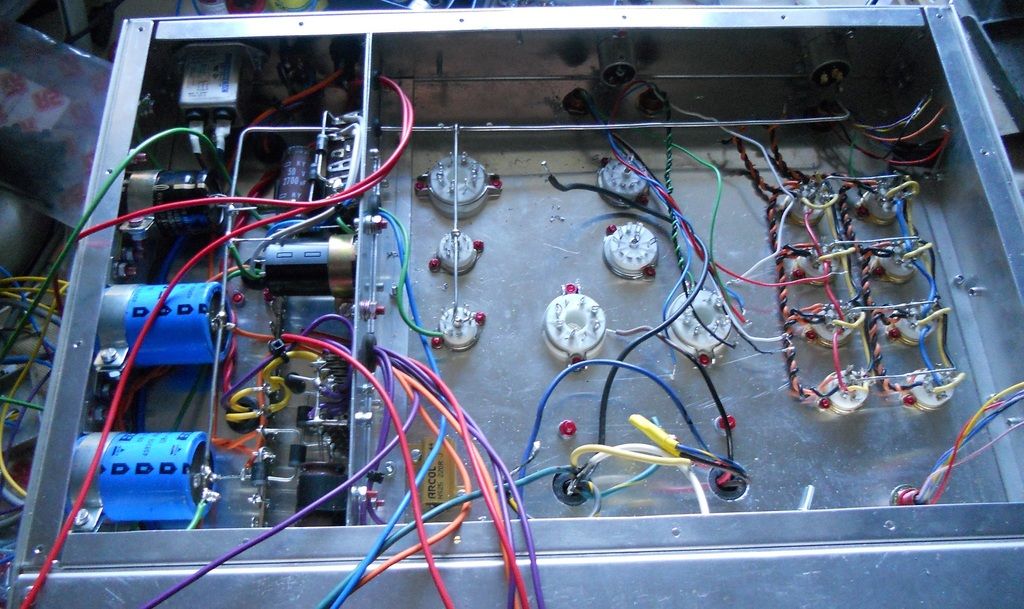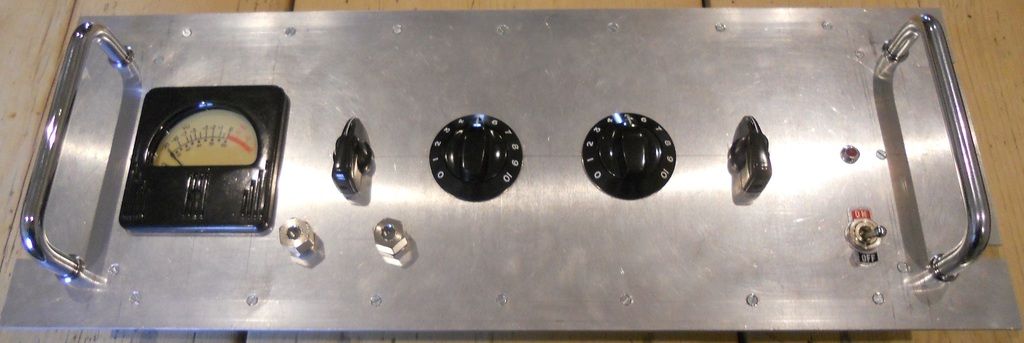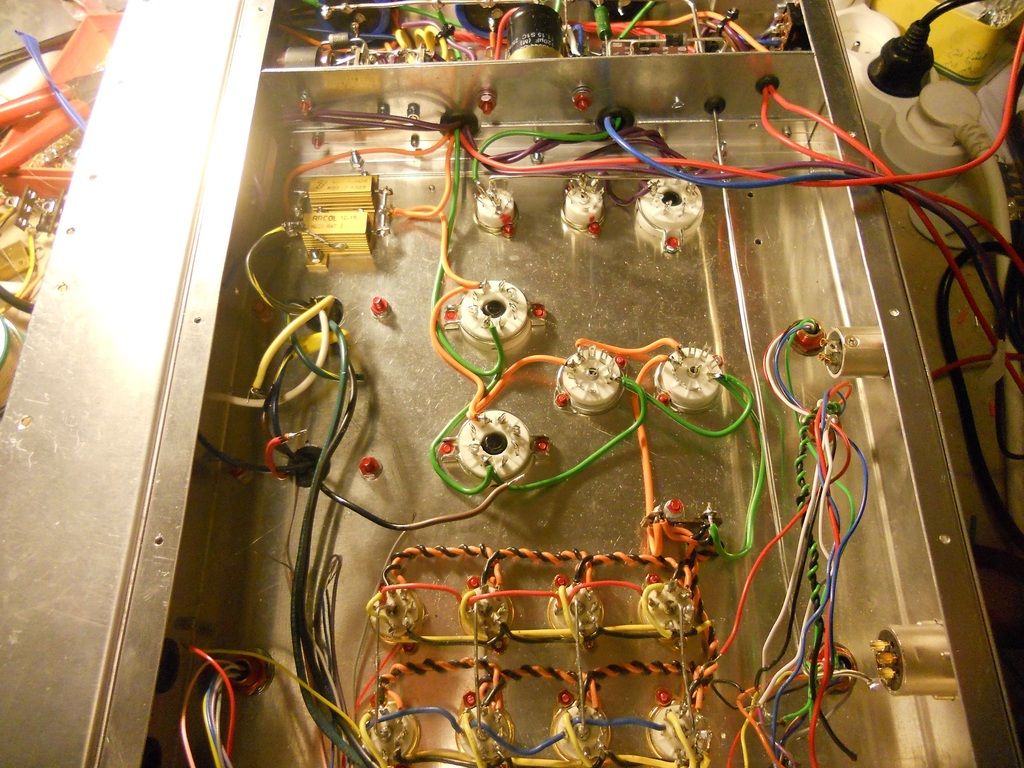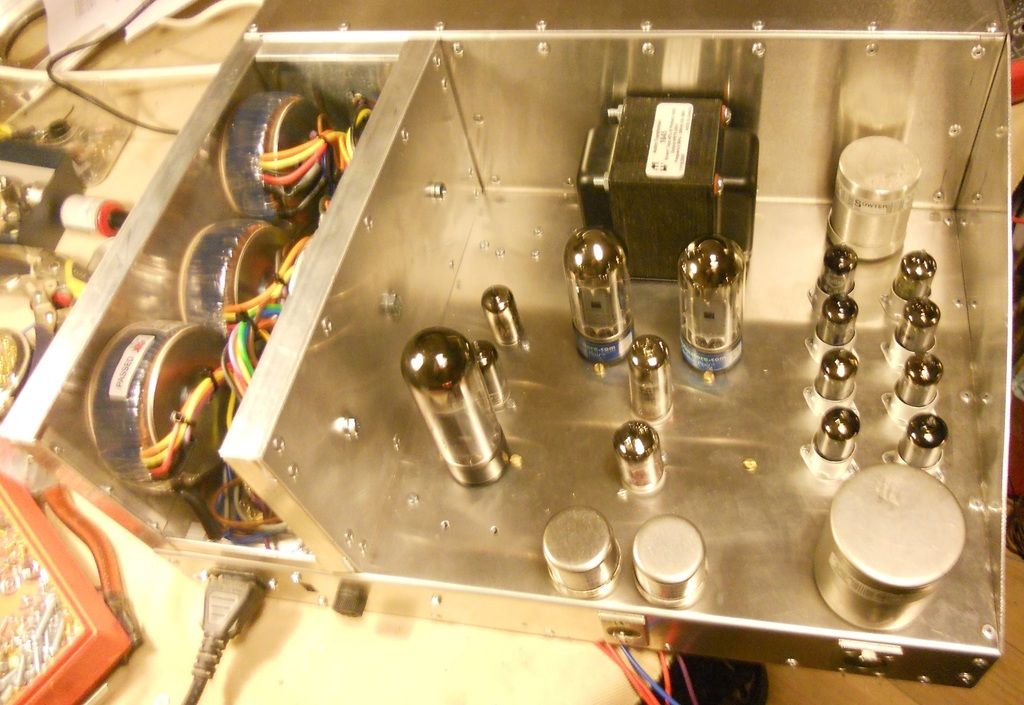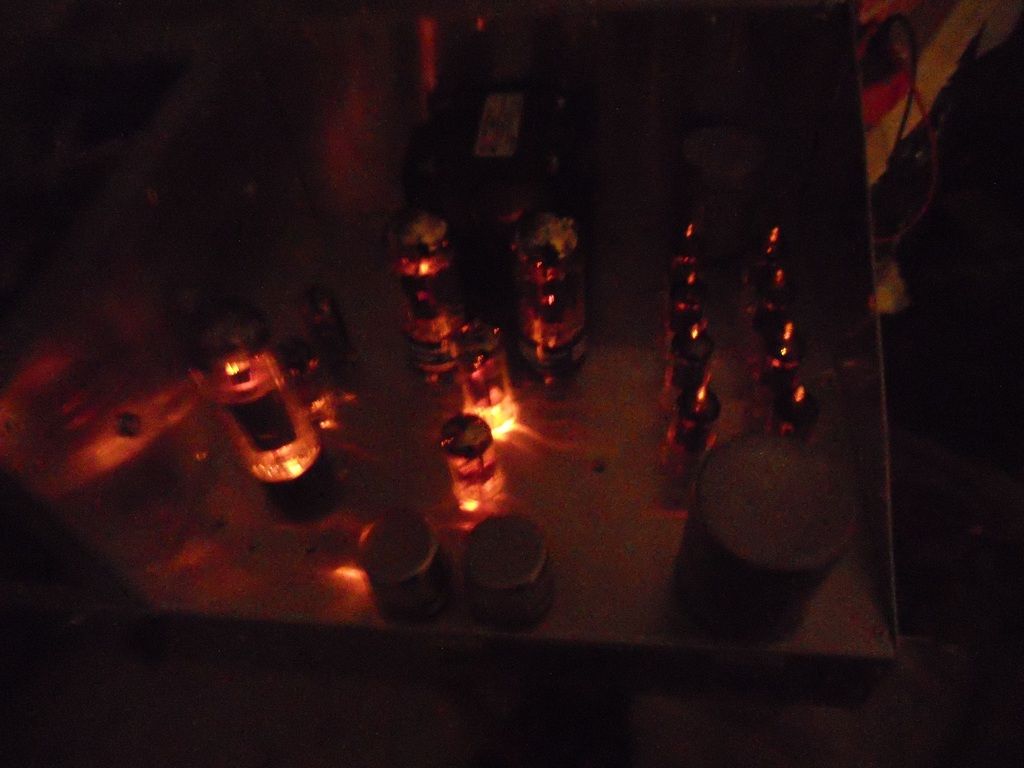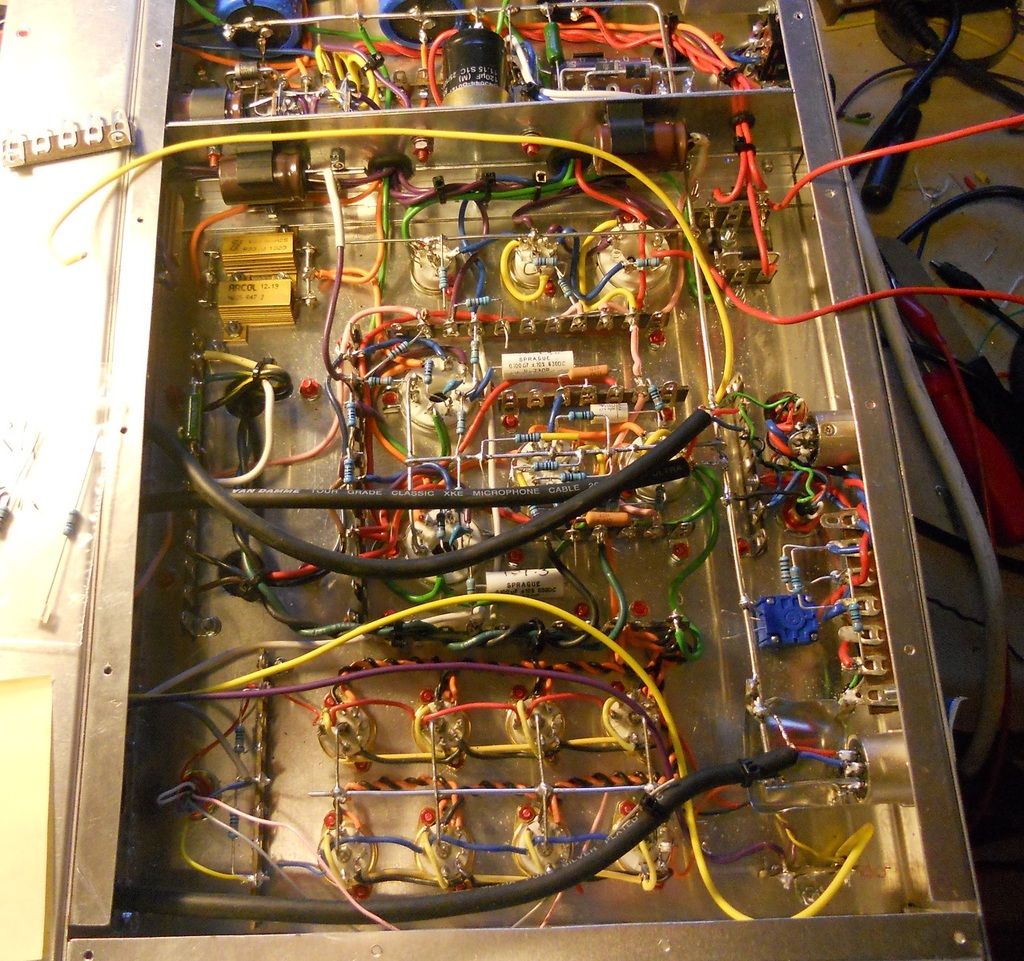I'm now able to start fitting the components.
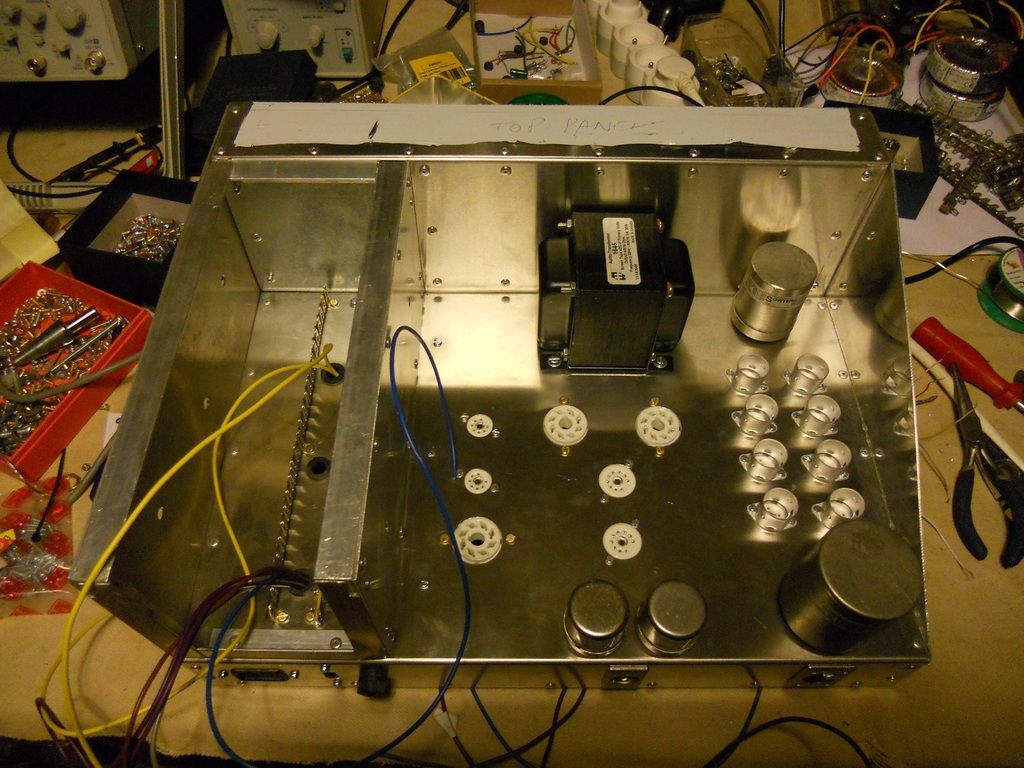
The Sowter input and output transformers and the 8 bases fpr the 6BA6's are on the right.
The TX's for the control amp are not so critical so I used a pair of OEP's and a big 30W Hammond 1645.
The bases on the left are for the EL34 passing tube, a 6AU6 and a 5651, all part of the regulator.
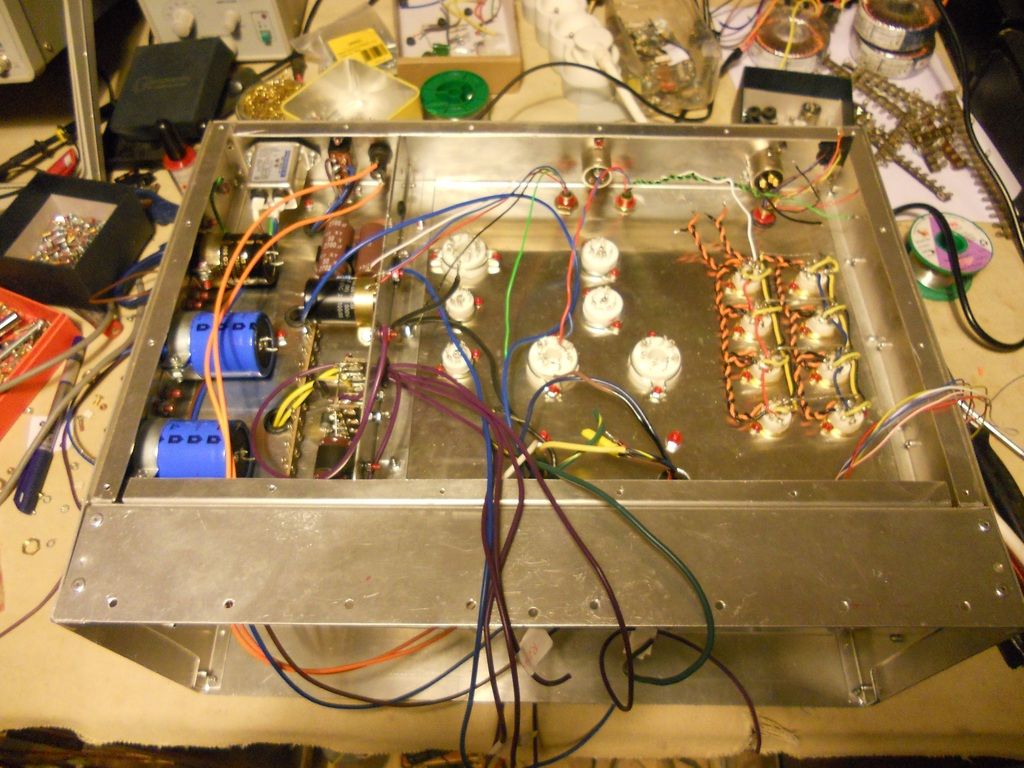
It took some time to design the power supply compartment, but all the capacitors are in place now.
I have been marking up the schematic as I go with the colour codes for the wiring. with such a big amp, you could easily forget what's what, by the time you got around to connecting something later.
Over the next week I hope to wire up the heaters and put in an earth busbar following Merlin Blencowe's online advice.
I have used a mains voltage selector switch for the first time, this complicated the power transformer wiring considerably, but is worthwhile on a top-end compressor.
All for now.
DaveP

The Sowter input and output transformers and the 8 bases fpr the 6BA6's are on the right.
The TX's for the control amp are not so critical so I used a pair of OEP's and a big 30W Hammond 1645.
The bases on the left are for the EL34 passing tube, a 6AU6 and a 5651, all part of the regulator.

It took some time to design the power supply compartment, but all the capacitors are in place now.
I have been marking up the schematic as I go with the colour codes for the wiring. with such a big amp, you could easily forget what's what, by the time you got around to connecting something later.
Over the next week I hope to wire up the heaters and put in an earth busbar following Merlin Blencowe's online advice.
I have used a mains voltage selector switch for the first time, this complicated the power transformer wiring considerably, but is worthwhile on a top-end compressor.
All for now.
DaveP




